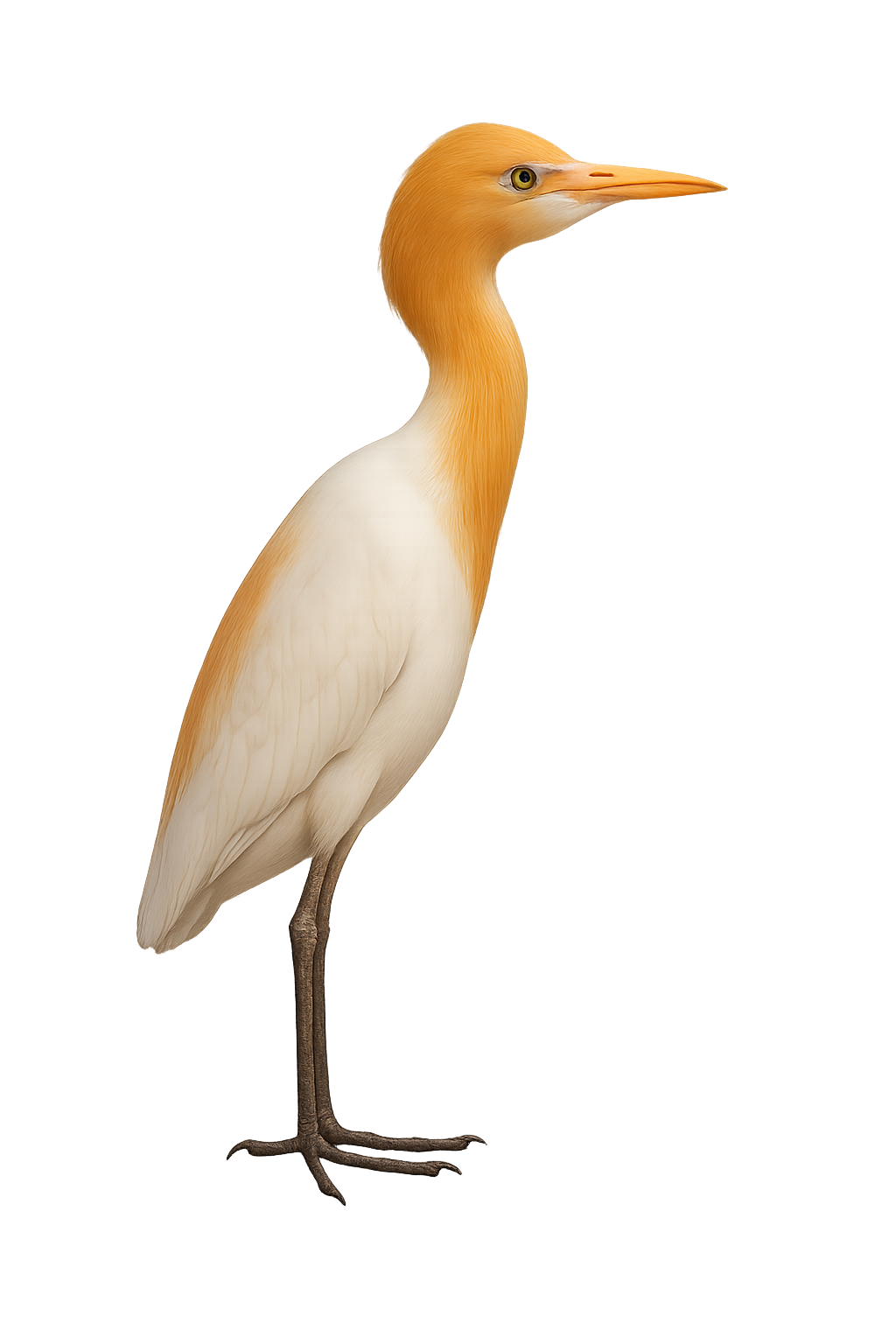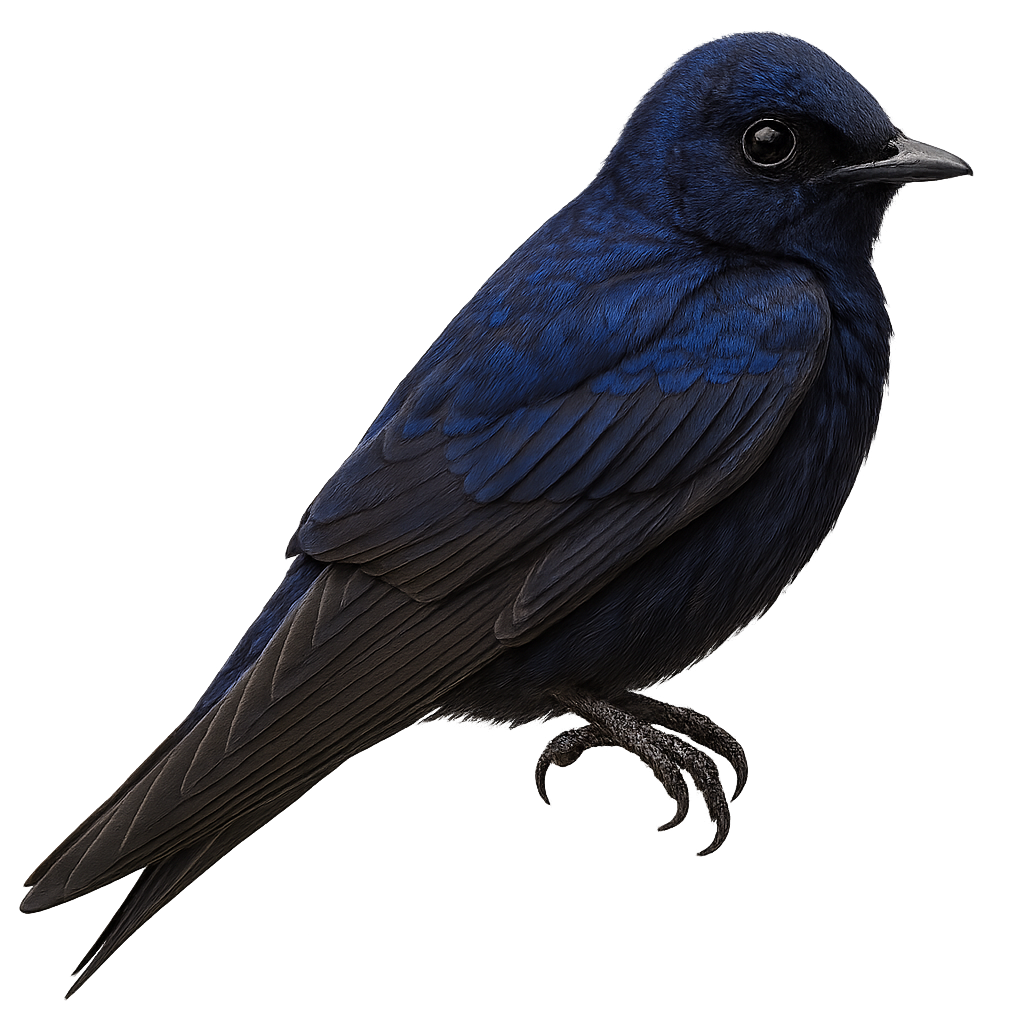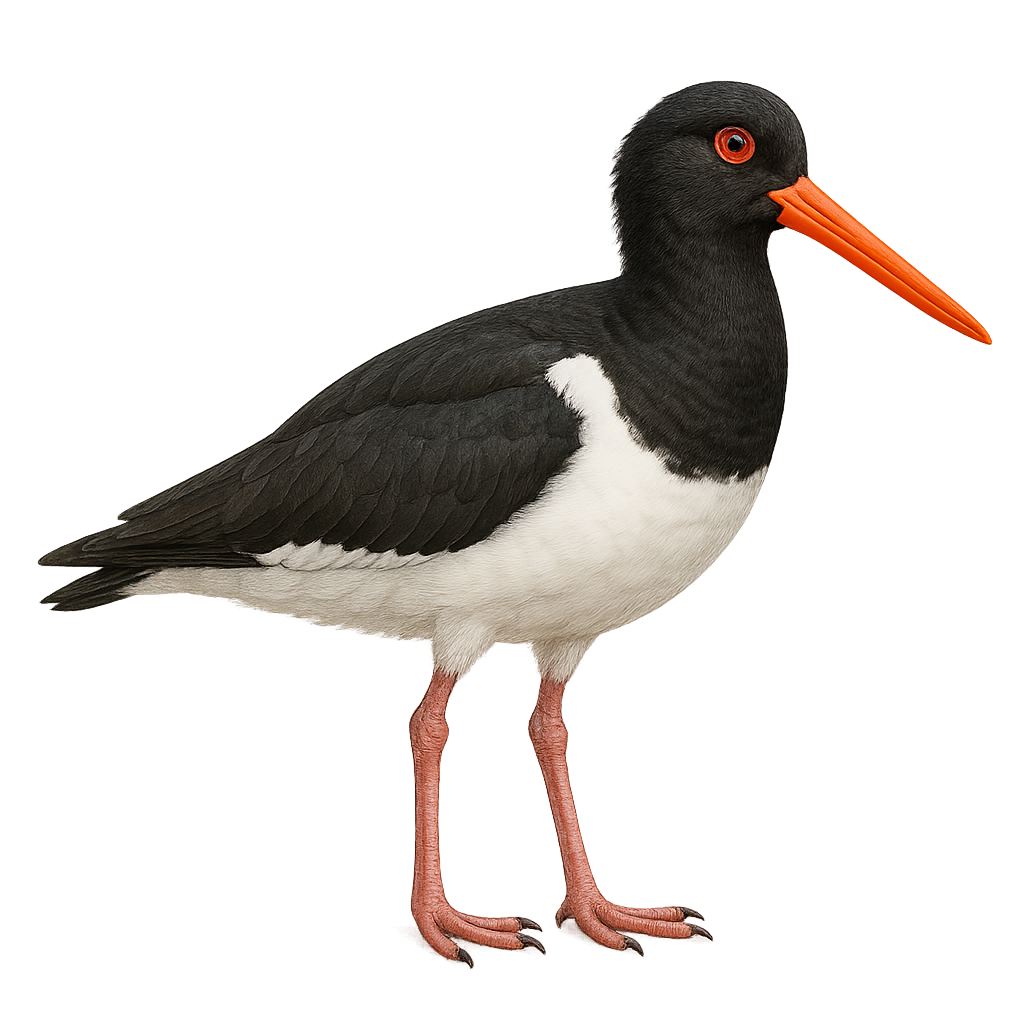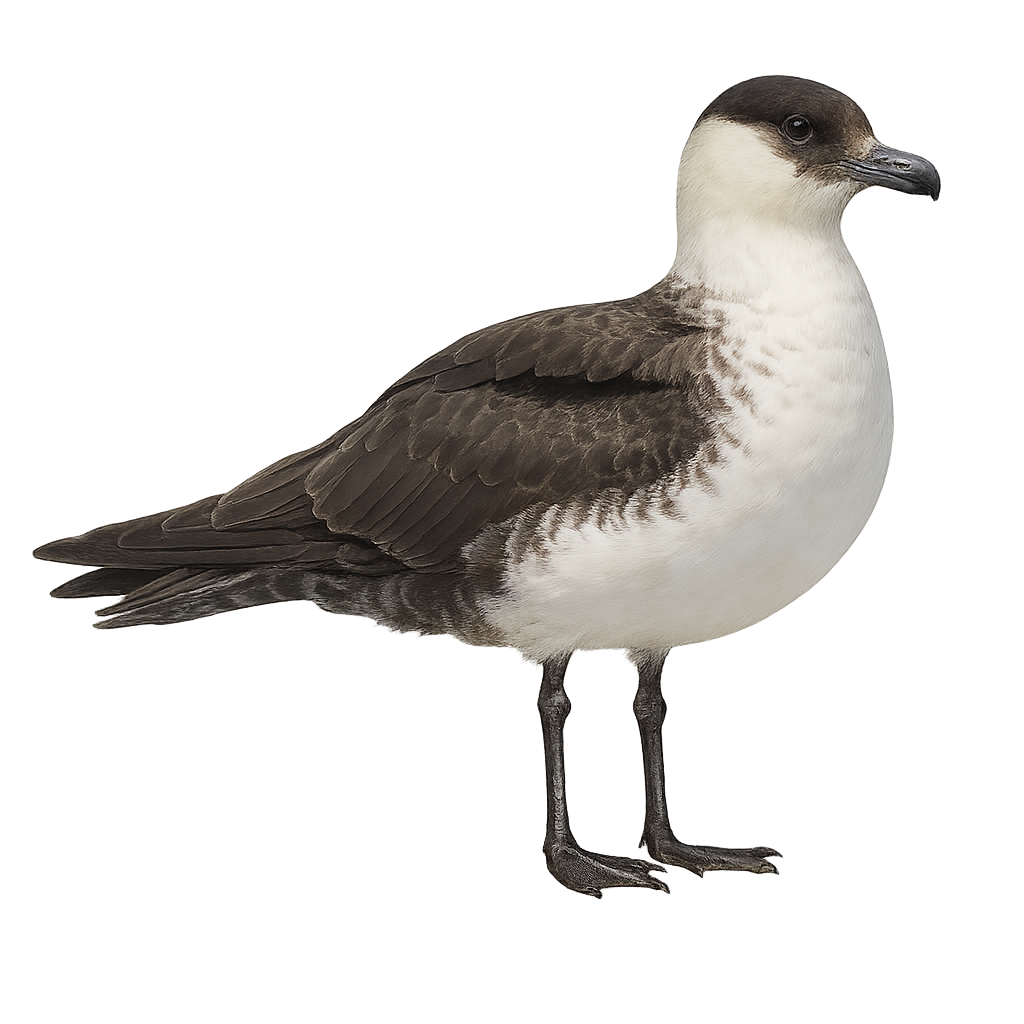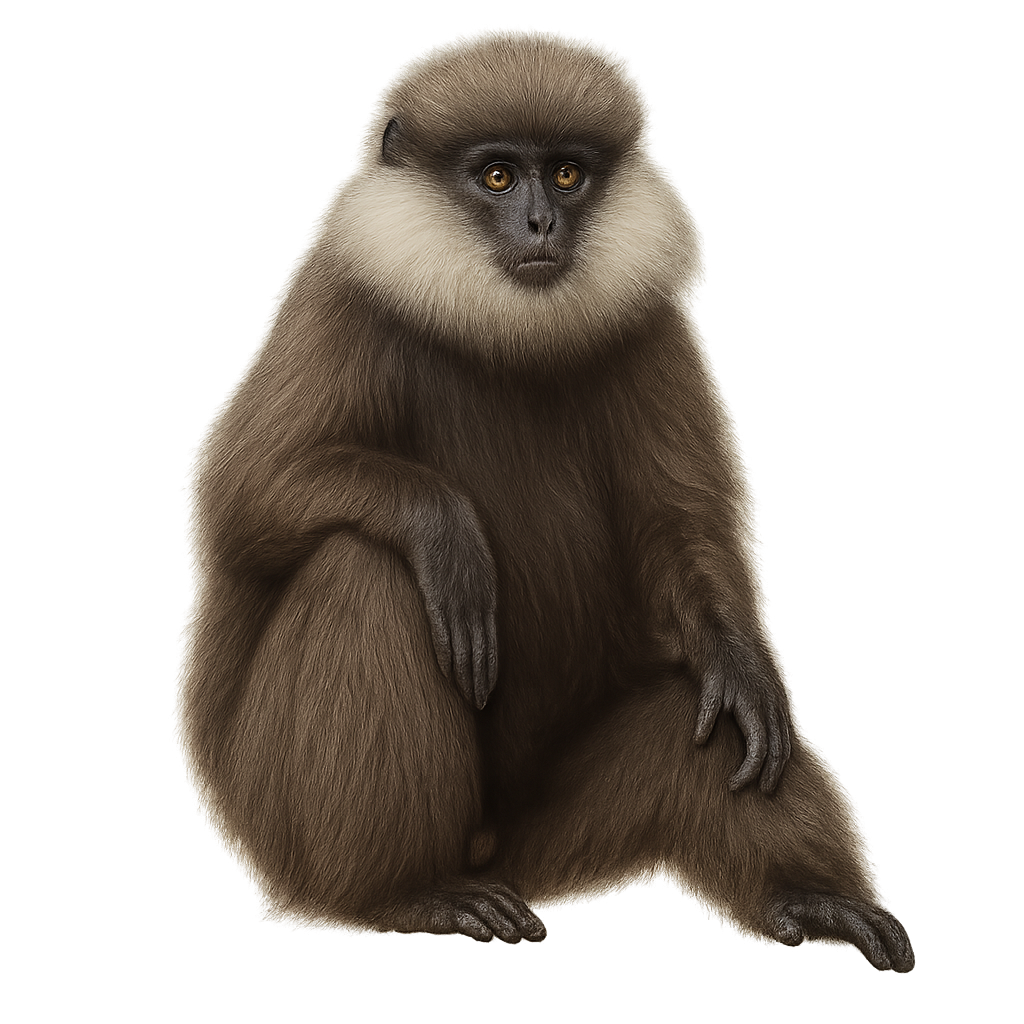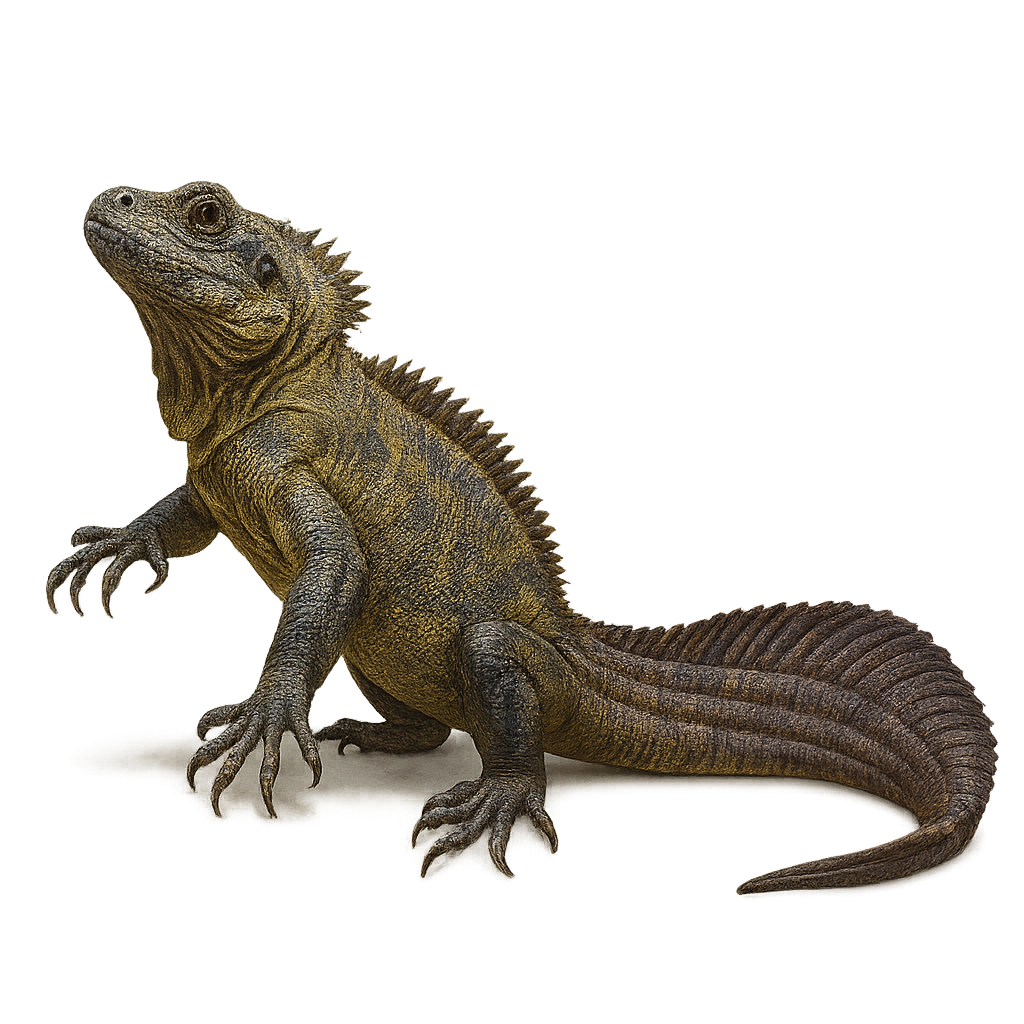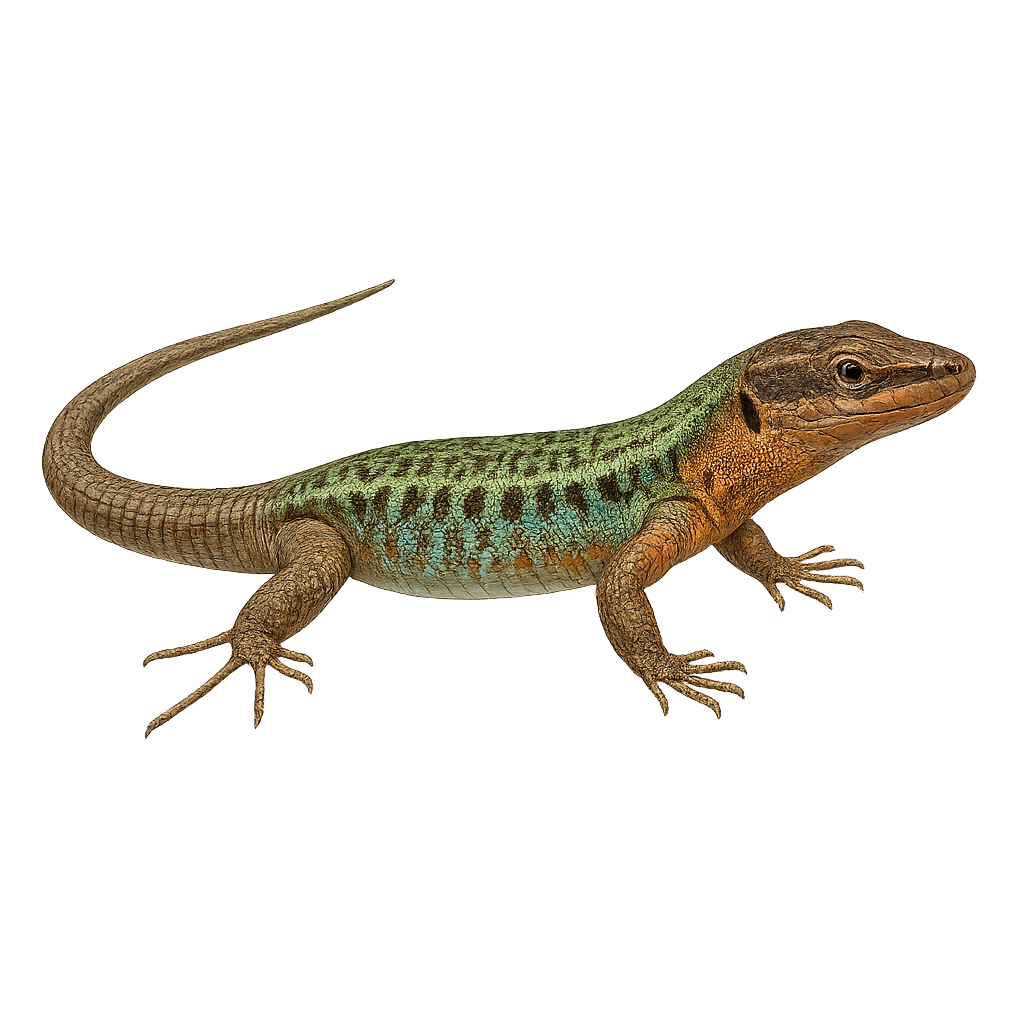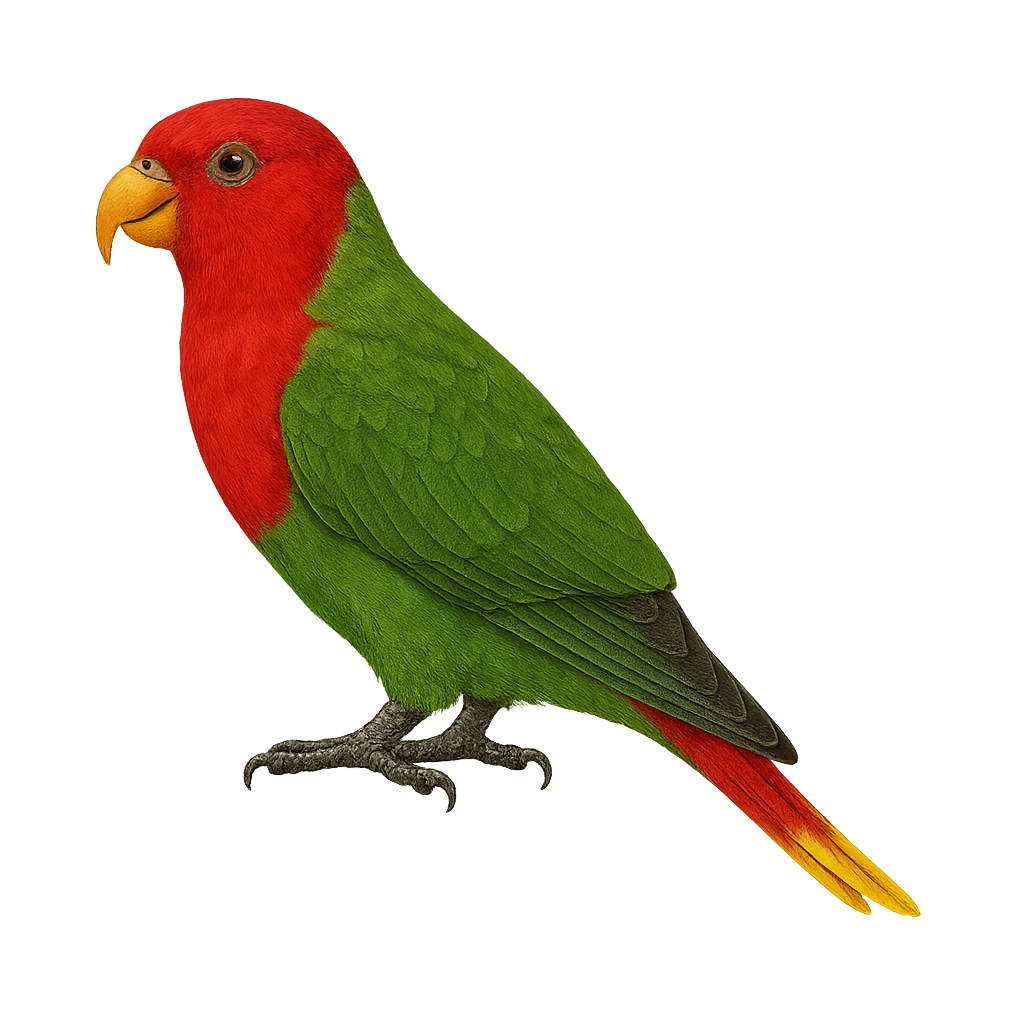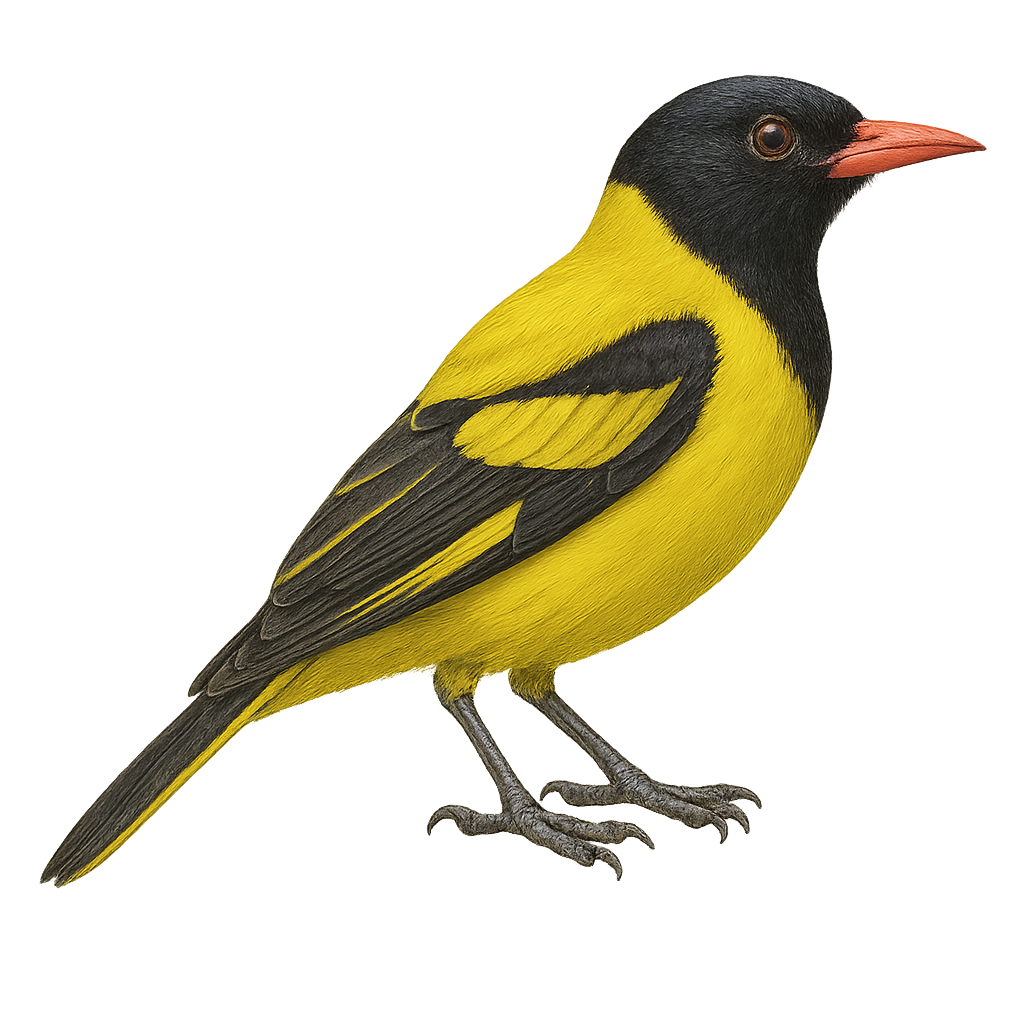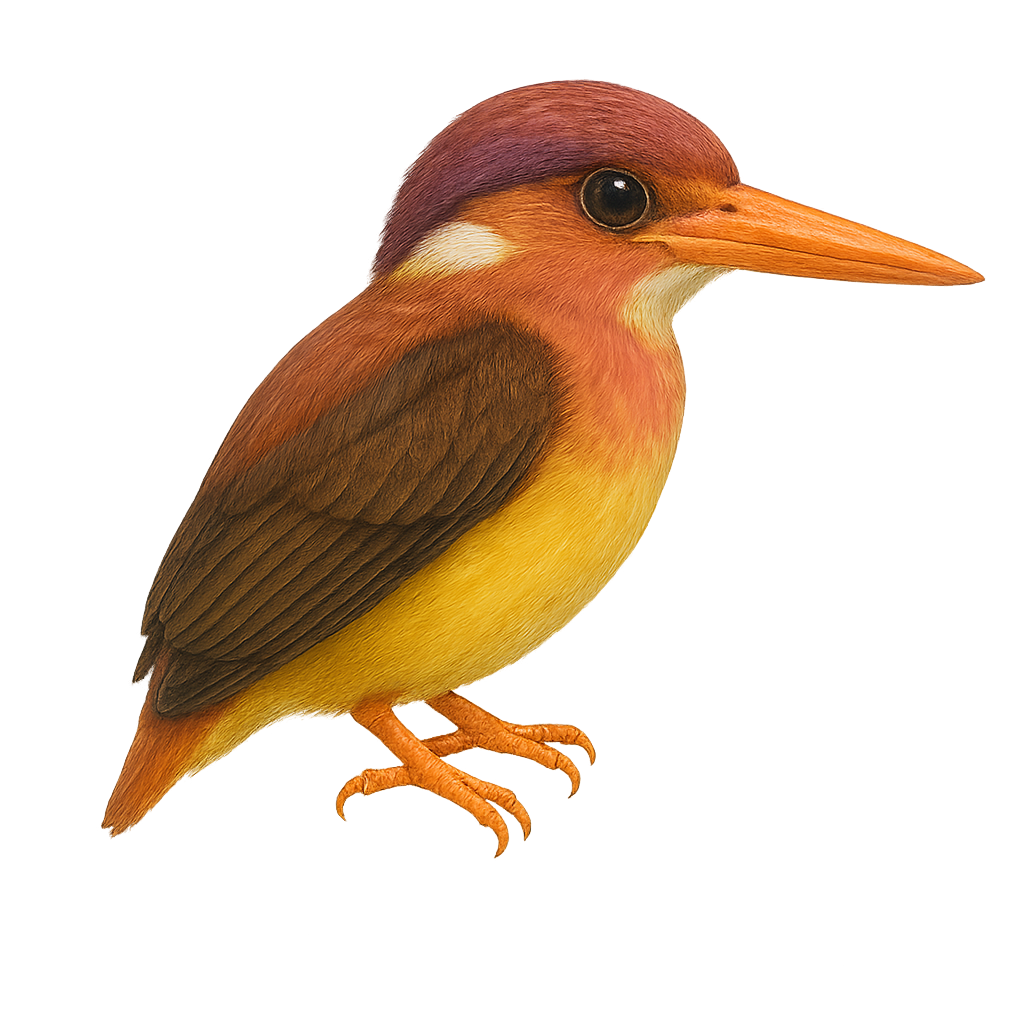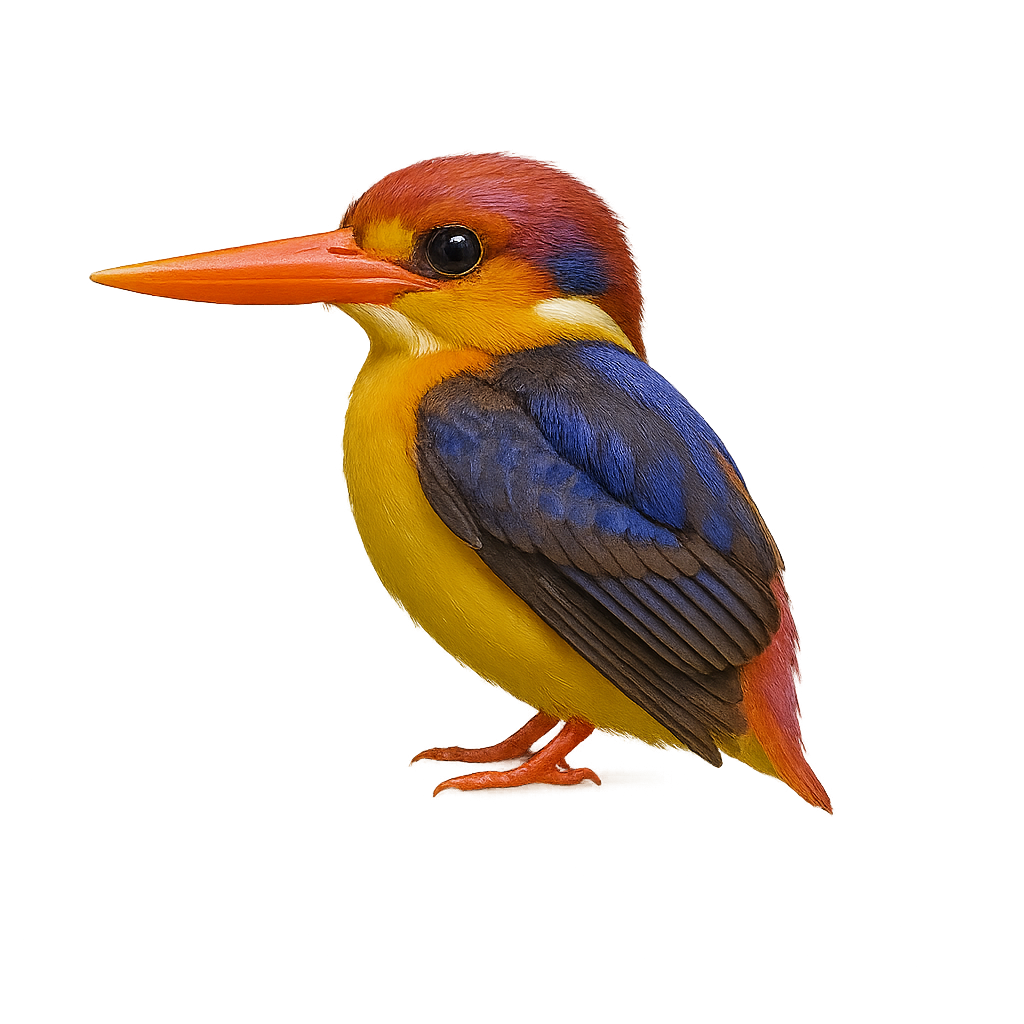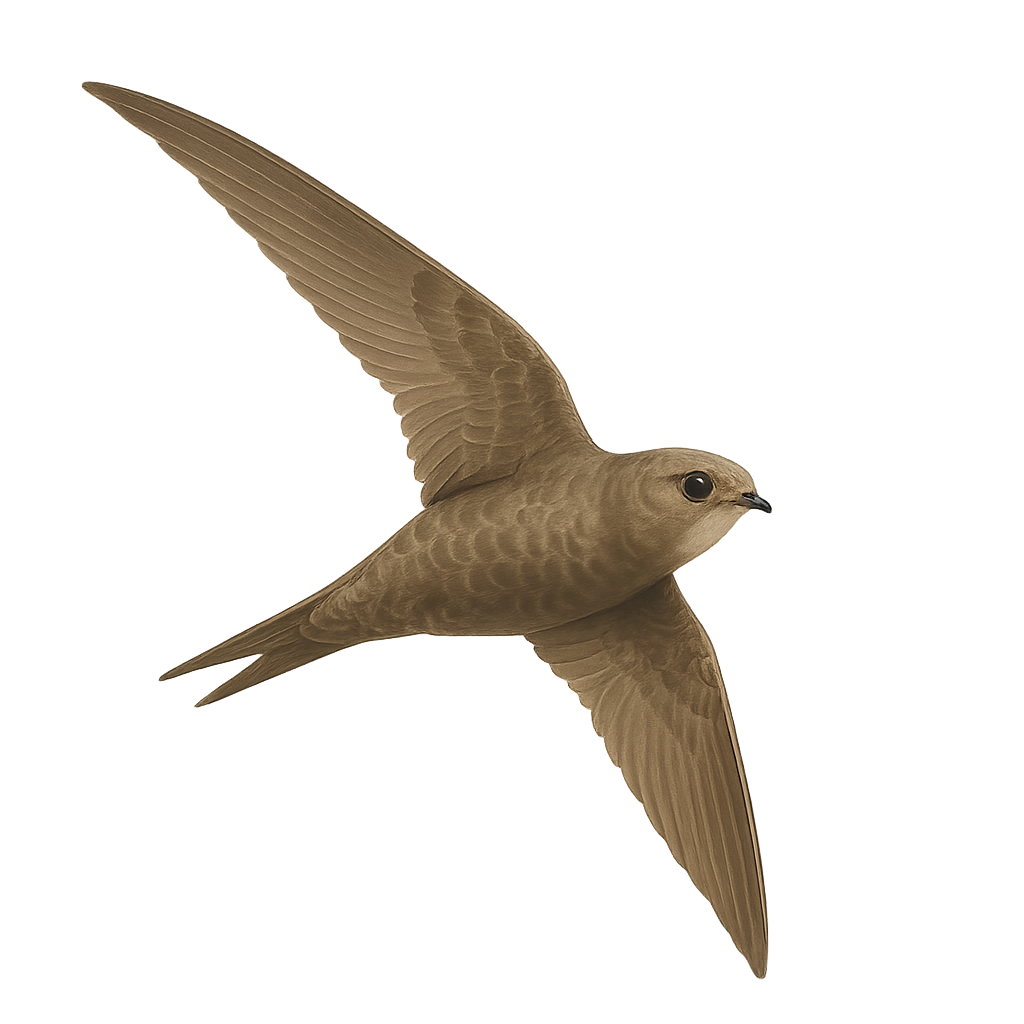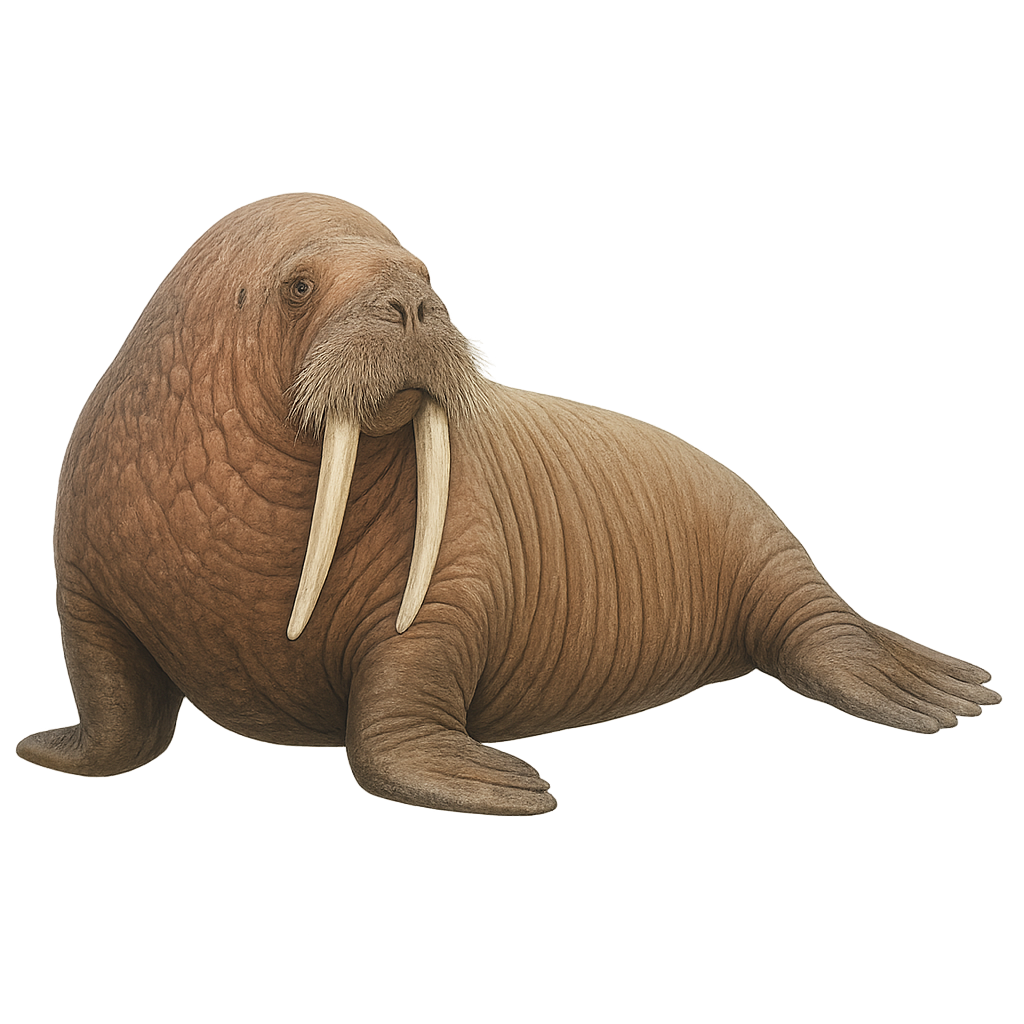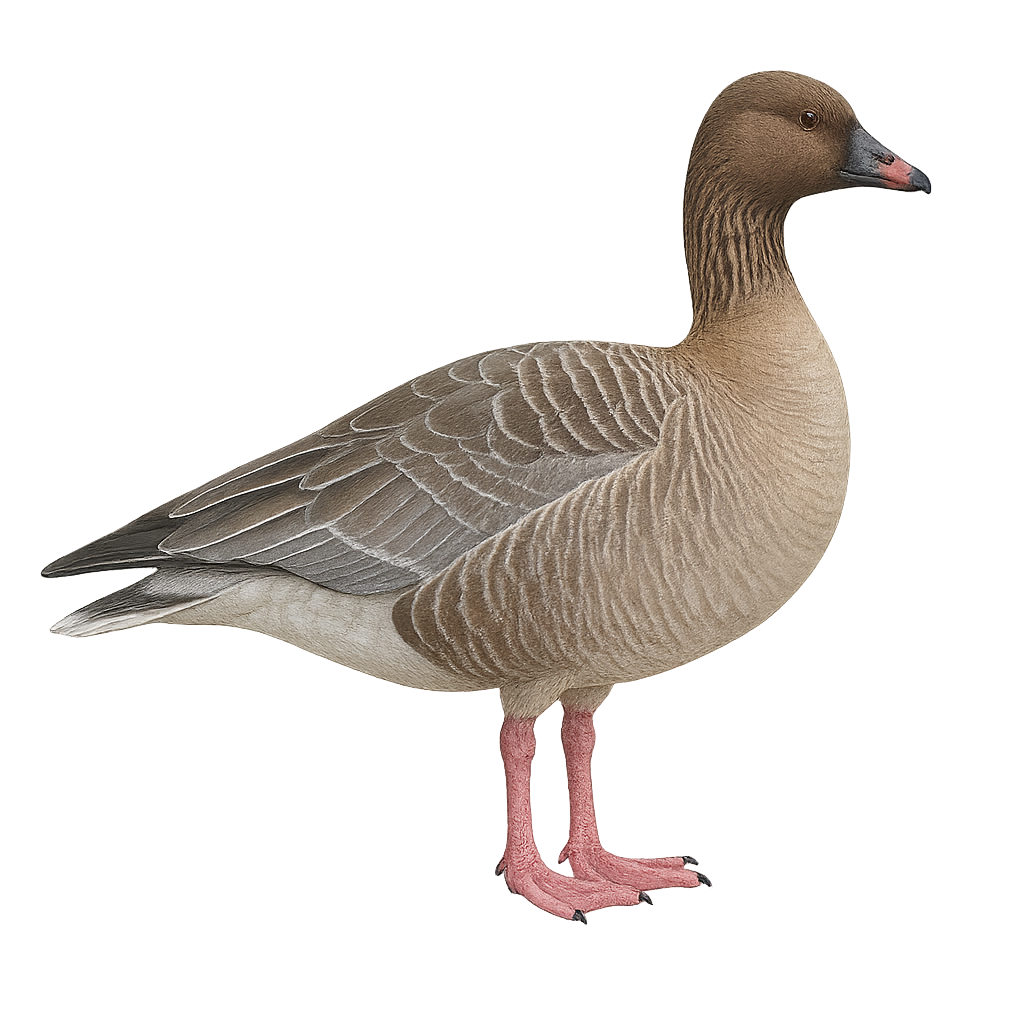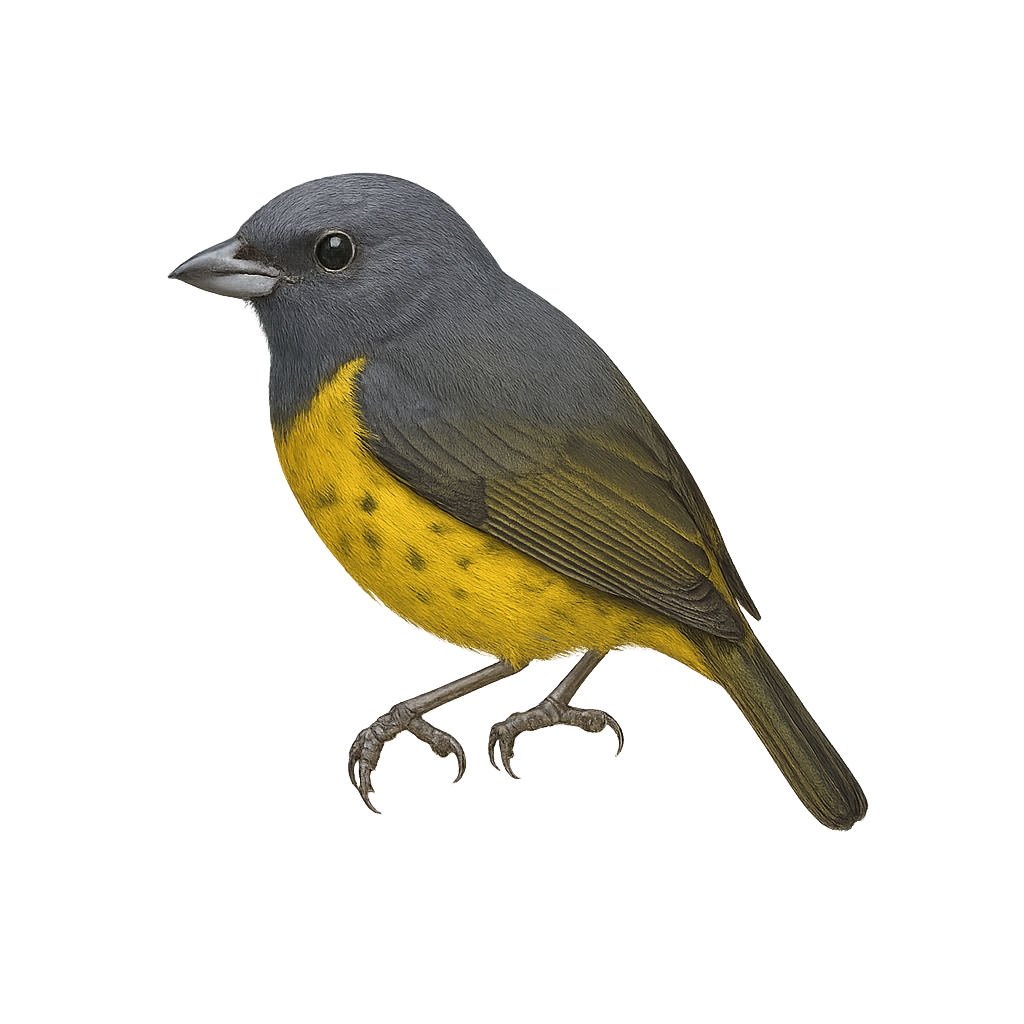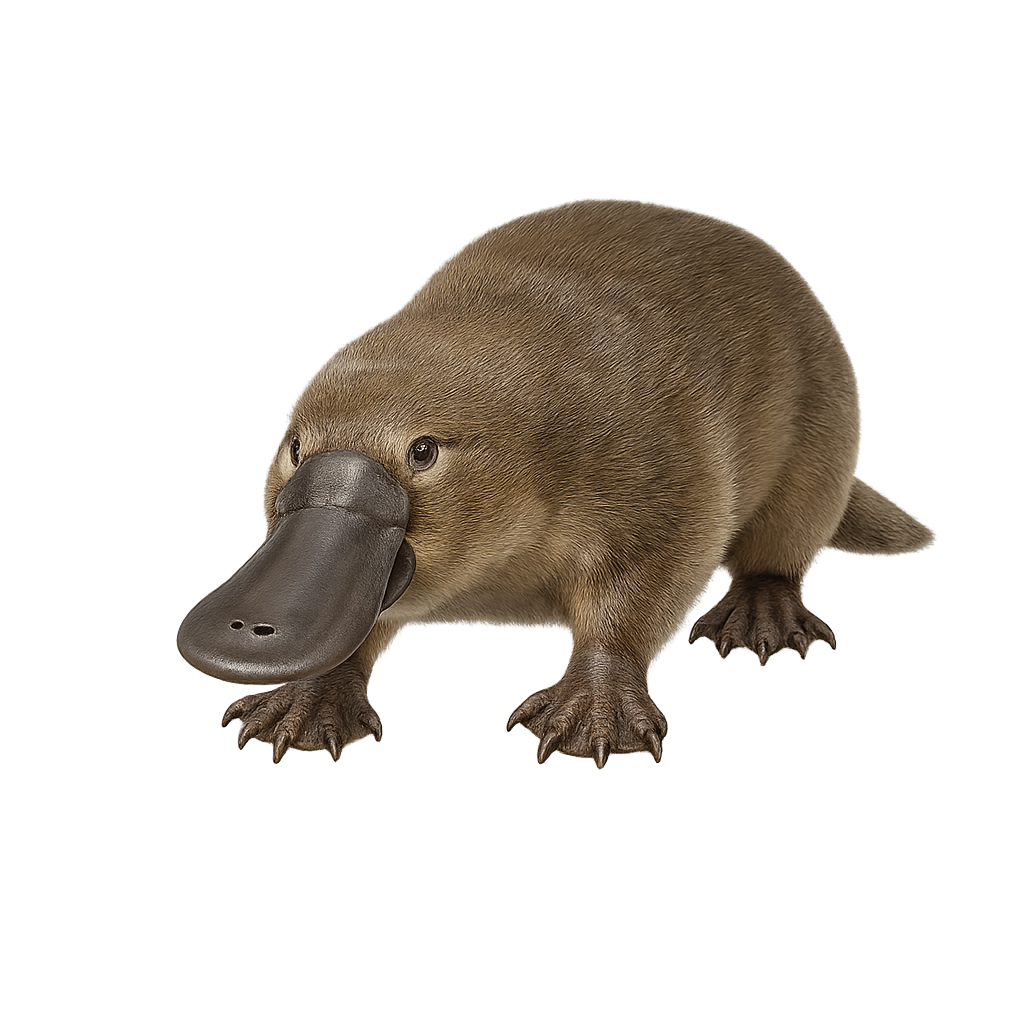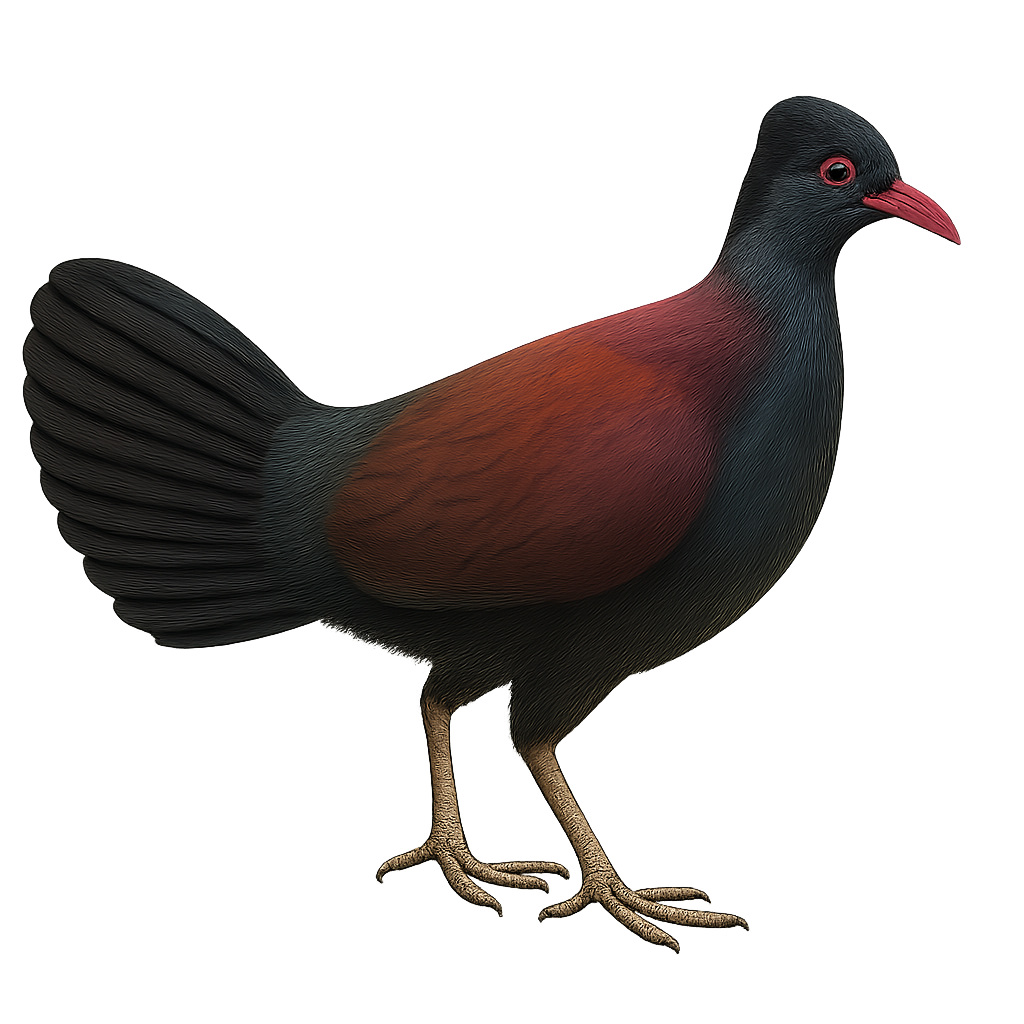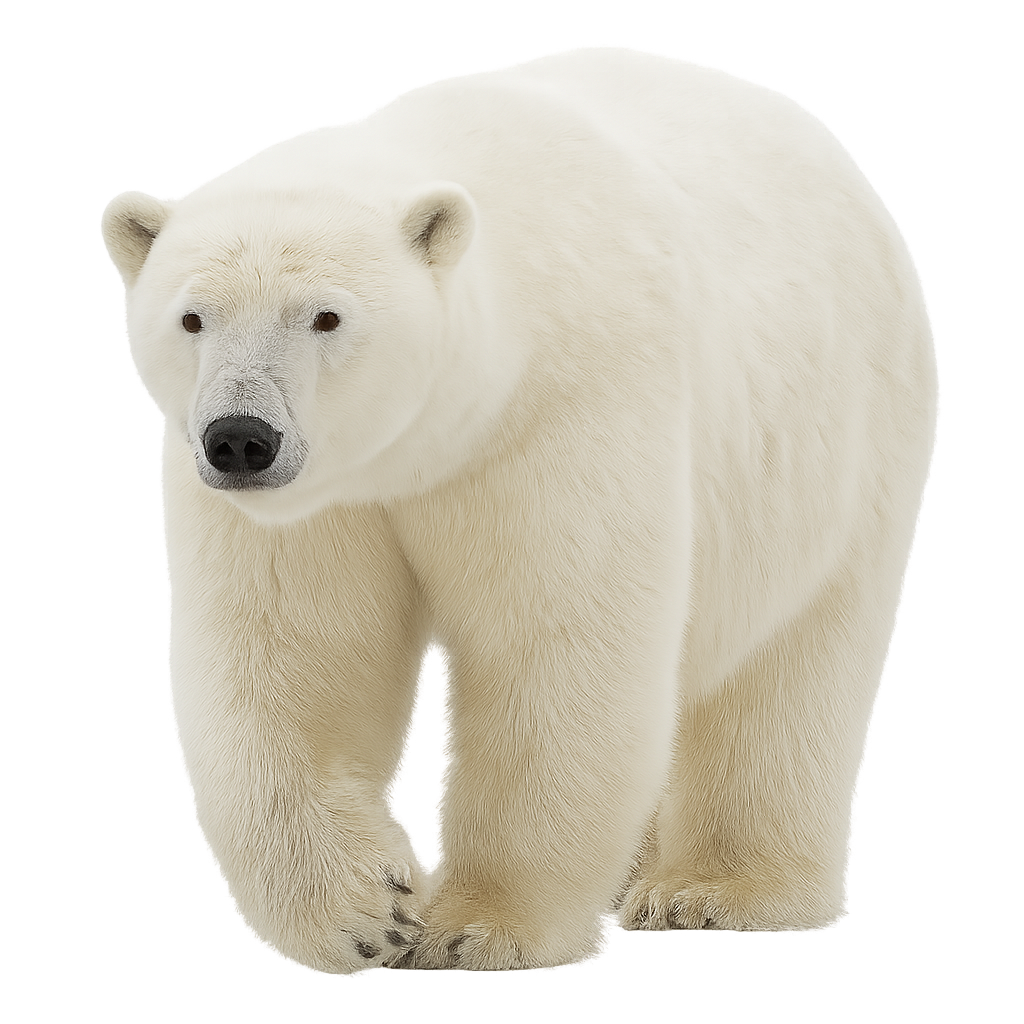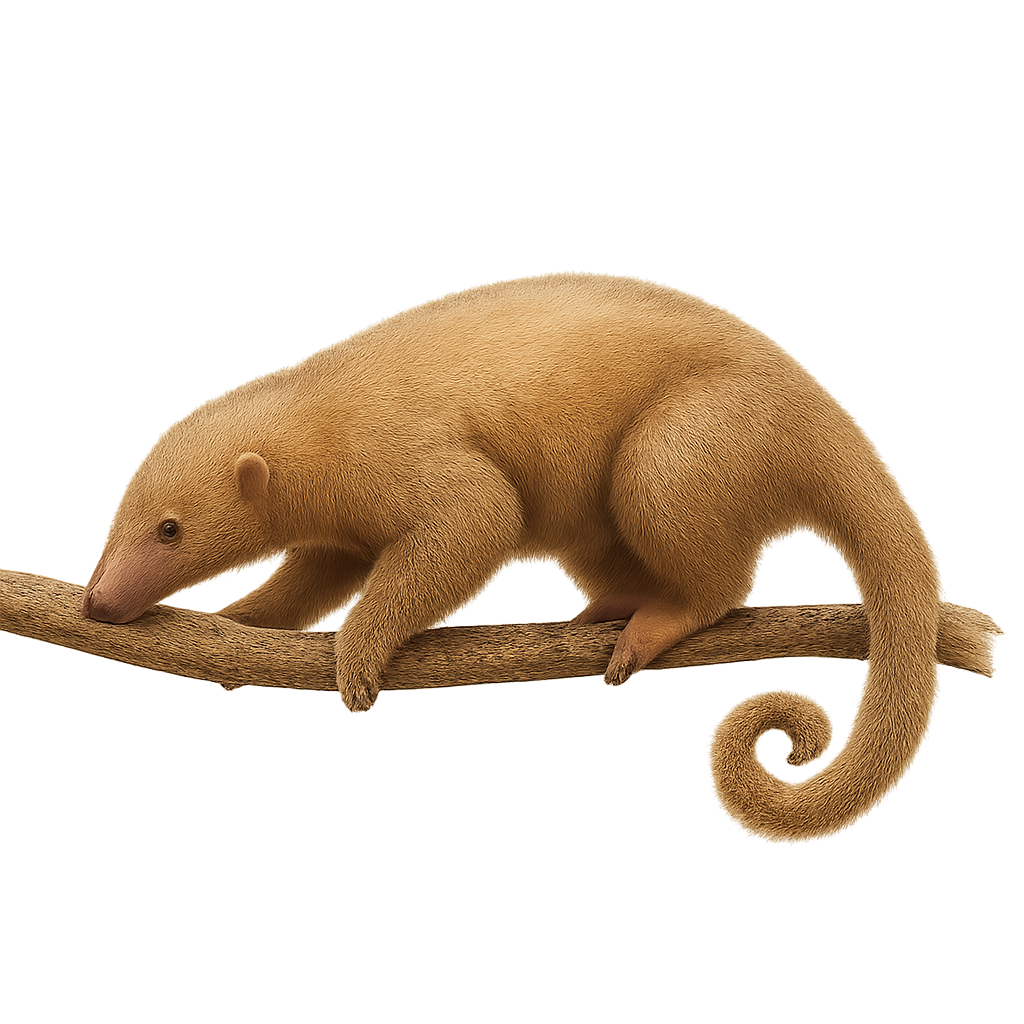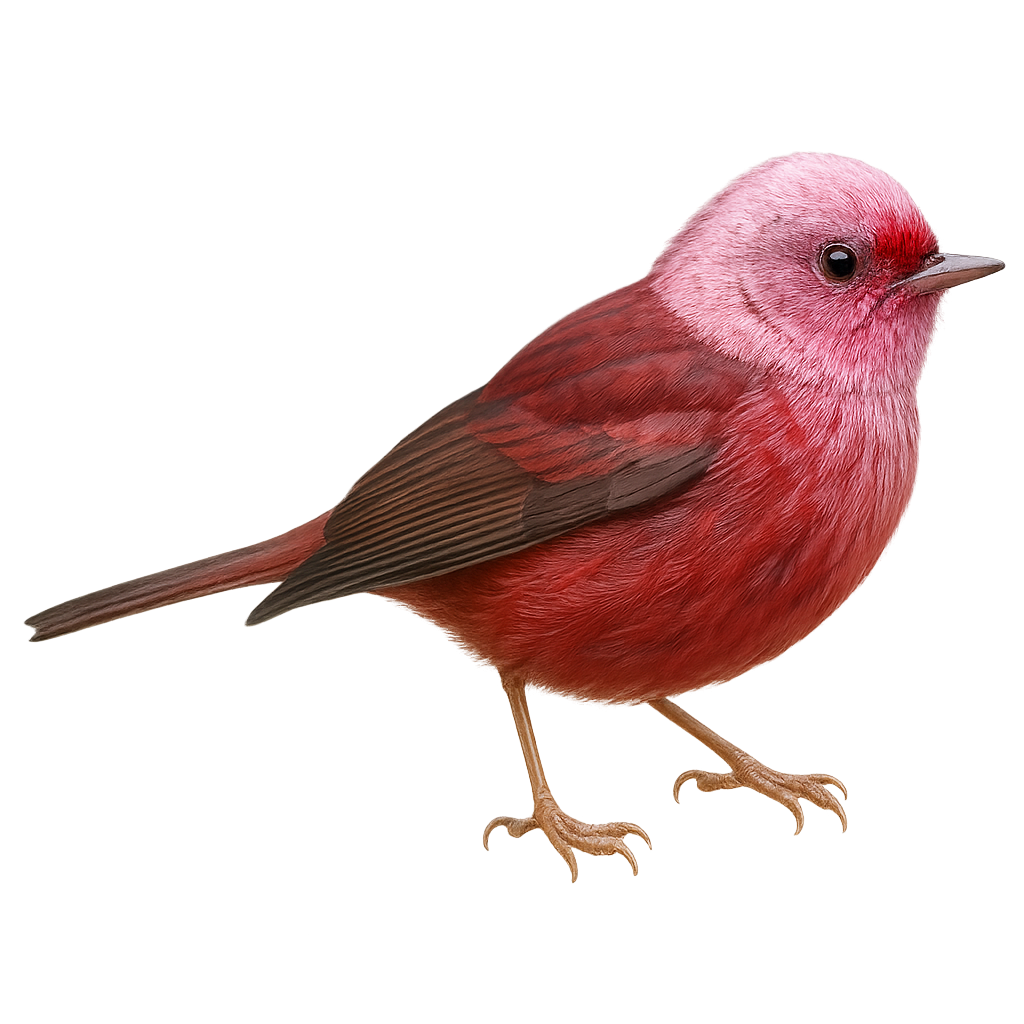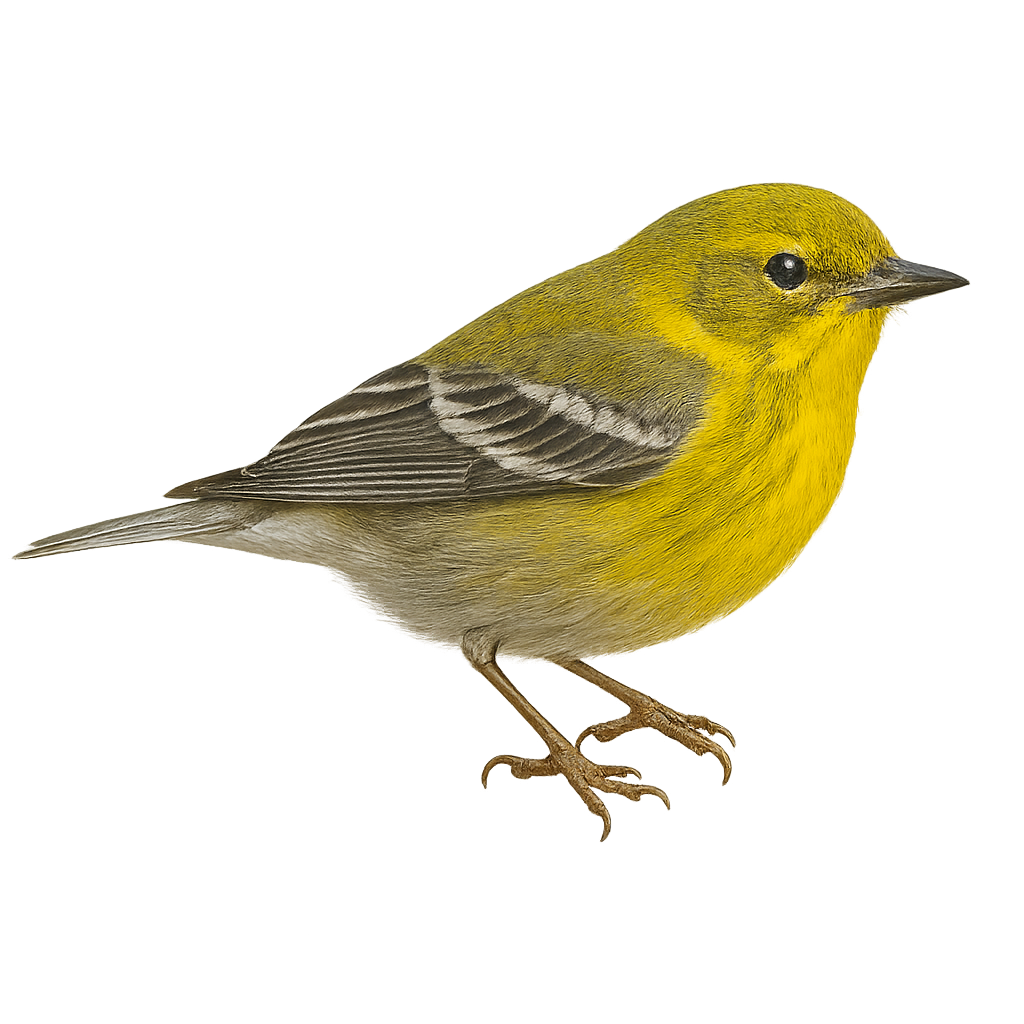The Purple Honeycreeper is a small tropical bird with vibrant plumage, primarily blue with shades of violet, and black wings. Males have a curved black bill, while females display a more subdued green plumage. This bird inhabits the humid forests of Central and South America, feeding mainly on nectar, fruits, and insects. Its behavior is generally active and sociable, often seen in small groups. It plays a crucial role in the pollination of tropical plants. Although not currently threatened, deforestation poses a potential risk to its natural habitat.
The Purple Heron, or Ardea coromanda, is a large, slender wading bird distinguished by its rich reddish-brown plumage and long neck. It inhabits rice fields, swamps, wooded wetlands, and lake edges across East and Southeast Asia. This heron is partially migratory, with seasonal movements depending on climate conditions. Typically solitary, it hunts slowly in shallow waters, feeding mainly on fish, amphibians, and aquatic invertebrates. The population is considered stable overall, although local declines may occur due to wetland loss.
The Purple Heron is a large wading bird, easily recognizable by its colorful plumage, ranging from purple to reddish, with shades of brown and blue. It measures about 80 to 100 cm in length, with a wingspan of 1.3 to 1.5 meters, and weighs between 600 and 1,200 g. Its beak is long, thin, and pointed, with a yellowish-green color, while its legs are long and gray. During the breeding season, the Purple Heron sports decorative plumes on its head and neck. It primarily inhabits wetlands, marshes, rivers, and lakes across Europe, Africa, and Asia, where it feeds on fish, crustaceans, small mammals, and occasionally insects. It primarily hunts at night or during twilight, using its great agility to capture prey in the water. Although the species is not immediately endangered, it is vulnerable to habitat loss, water pollution, and human disturbance.
The Pygmy Hippopotamus is a smaller species of hippopotamus, much smaller than its cousin the Common Hippopotamus, with an adult size measuring about 1.5 to 1.75 meters in length and weighing between 180 and 275 kg. Its coat is gray-olive or dark brown, with smooth and thick skin. Unlike the Common Hippopotamus, the Pygmy Hippopotamus primarily inhabits the forests of West Africa, particularly in Liberia, Sierra Leone, Guinea, and Côte d'Ivoire, and prefers shallow rivers and swamps rather than vast expanses of water. It is primarily herbivorous, feeding on aquatic vegetation and foliage, but unlike its cousin, it does not spend all its time in the water and can be more active on land. The Pygmy Hippopotamus is a nocturnal and solitary species, often elusive and difficult to observe. Although it is less exposed to threats than the Common Hippopotamus, it is still endangered due to habitat loss, hunting, and human disturbance.
The Purple Martin, or Progne subis, is a migratory bird belonging to the Hirundinidae family. It is recognizable by its glossy blue-black plumage in males, while females have duller tones with a grayish belly. This bird is the largest swallow in North America and is noted for its agile and graceful flight. It often nests in colonies in man-made birdhouses, making it dependent on humans for reproduction. Its diet consists mainly of insects caught in flight. As a migratory species, it winters in South America and returns to North America for the breeding season.
The Pied Oystercatcher is a medium-sized coastal bird, easily identifiable by its distinctive black and white plumage and long, bright red bill. It primarily inhabits the sandy and rocky shores of Australia, where it feeds mainly on mollusks, crustaceans, and other marine invertebrates. Its powerful bill allows it to skillfully open the shells of its prey. This bird is often seen in small groups, although it can also be solitary. It is known for its piercing calls and territorial behavior, especially during the breeding season. Pied Oystercatchers are monogamous and form lasting pairs. Their nest is usually a simple scrape in the sand or pebbles, where they lay two to three eggs.

The Pyrenean Chamois, or Rupicapra pyrenaica, is a medium-sized ungulate, easily recognizable by its reddish-brown coat and curved horns. It measures about 70 to 80 cm at the shoulder, with a length of 1 to 1.2 meters, and weighs between 25 and 50 kg. Its body is compact and robust, adapted for mountainous terrain, with long and powerful legs, perfect for moving on steep slopes. The Pyrenean Chamois primarily inhabits the mountains of the Pyrenees, the northern region of Spain, and southern France. It prefers rocky slopes and wooded areas, where it feeds mainly on grasses, plants, berries, and young shoots. The Pyrenean Chamois is a shy and elusive animal, living in family groups during the winter, but often separating into small groups or remaining solitary during the summer. Although the species nearly disappeared in the early 20th century, conservation efforts have led to its recovery. The Pyrenean Chamois is currently classified as a species of least concern, but it remains vulnerable to hunting and habitat loss.
The Parasitic Jaeger, or Stercorarius parasiticus, is a medium-sized seabird, easily recognizable by its pointed wings and dark plumage. It measures about 45 to 50 cm in length, with a wingspan of 110 to 125 cm, and weighs between 300 and 450 g. Its plumage is typically dark brown or gray on the back, with a lighter belly. Adults have a distinctive feature: a forked tail with extended feathers, especially in males. The Parasitic Jaeger is a migratory bird that primarily inhabits the Arctic and subarctic regions but moves to more temperate zones during the winter. This bird is particularly known for its parasitic behavior, in which it chases other seabirds to force them to drop their catch, allowing the Jaeger to steal their food. The Parasitic Jaeger is also an excellent flyer, capable of traveling long distances. While the species is not endangered, it is sensitive to human disturbances and climate changes that affect its coastal habitat.
The Pomarine Jaeger is a medium-sized seabird known for its long, pointed wings and spatula-shaped tail. It has a dark brown plumage with lighter underparts and distinctive white wing markings. This agile predator is often seen chasing other birds to steal their food. It breeds mainly in Arctic regions and migrates to southern oceans in winter. Its preferred habitat includes coastal areas and open seas. The Pomarine Jaeger is an opportunistic bird, capable of adapting to various marine environments to survive.
The Trachypithecus vetulus, commonly known as the Purple-faced Langur, is a primate endemic to Sri Lanka. This monkey features dense fur ranging from dark brown to black, with a distinctive purple-tinged face. It primarily inhabits tropical rainforests, lowland forests, and mountainous areas. Being diurnal, it spends most of the day foraging for leaves, fruits, and flowers. Purple-faced langurs are social animals living in family groups led by a dominant male. Unfortunately, their habitat is threatened by deforestation, leading to a decline in their population. They are currently classified as vulnerable by the IUCN.
The Hydrosaurus pustulatus, commonly known as the Philippine Sailfin Lizard, is a fascinating reptile endemic to the Philippine islands. This lizard is famous for its spectacular dorsal crest resembling a sail, used to impress rivals and attract mates. It primarily inhabits tropical rainforests and riparian zones, where it spends much time swimming. Measuring up to a meter in length, it is mainly herbivorous, feeding on leaves, fruits, and flowers, though it may occasionally consume insects. This lizard is diurnal and spends most of its time basking in the sun to regulate its body temperature. Although relatively tolerant of human presence, it remains cautious and quickly flees when threatened.
The Peloponnese Wall Lizard, scientifically known as Podarcis peloponnesiacus, is a medium-sized lizard endemic to the Peloponnese region of Greece. It typically measures between 18 and 25 cm in total length, including the tail. Its coloration ranges from brown to green with distinct dorsal patterns, allowing it to blend seamlessly into its natural rocky habitats. Preferring rocky terrains, stone walls, and shrubby areas, it is primarily active during the day, basking in the sun and feeding on insects, spiders, and occasionally small fruits. Known for its speed and agility, this lizard is adept at evading predators.
The Papuan Lorikeet, Charmosyna pulchella, is a small, colorful parrot native to New Guinea. This stunning bird features a vibrant plumage with shades of green, red, and blue, making it easily recognizable. It measures about 18 cm in length and is characterized by its tapered tail and pointed wings. The Papuan Lorikeet is a sociable bird, often seen in small groups, feeding primarily on nectar, pollen, and fruits. It inhabits tropical rainforests, forest edges, and occasionally gardens. Although relatively common in its natural habitat, preserving its environment is crucial for its long-term survival.
The Percival's Oriole is a fascinating bird primarily inhabiting the tropical and subtropical forests of East Africa. Recognizable by its striking plumage, it features a vibrant mix of colors, including shades of yellow, black, and sometimes green. This oriole is a medium-sized bird, measuring about 20 to 25 cm in length. It is known for its melodious and complex song, often heard at dawn. The Percival's Oriole is a sociable bird, often seen in small groups or pairs. It mainly feeds on insects, fruits, and nectar, playing a crucial role in the pollination of many plants. Although relatively common in its natural habitat, deforestation and habitat loss pose potential threats to its population.
The Philippine Dwarf Kingfisher, or Ceyx melanurus, is a small bird, measuring about 13 cm in length. It is primarily found in the humid tropical forests of the Philippines. Its vivid coloration, with a black back contrasting with bright blue wings and an orange belly, makes it a striking sight. This kingfisher feeds mainly on small fish and insects, which it captures by quickly diving from a low branch. It is often seen near rivers and streams, where it builds its nest in tunnels dug into the banks. Although its population is stable, deforestation poses a potential threat to its natural habitat.
The Pied Kingfisher is a medium-sized aquatic bird, measuring about 25 cm in length and weighing between 80 and 120 g. It is easily recognized by its distinctive black and white plumage, with a black head, white back, and wings that are also black and white. Its belly is generally white, and it has a long, straight, pointed bill, perfectly suited for catching fish and aquatic insects. This kingfisher primarily inhabits coastal areas, rivers, lakes, and marshes in sub-Saharan Africa, the Middle East, and southern Asia. It primarily feeds on small fish, but can also catch insects, crustaceans, and small frogs. The Pied Kingfisher is an excellent diver, often seen diving into the water at high speed from a perch to catch its prey. While often observed alone or in small groups, it can sometimes be seen in pairs during the breeding season. While it is widely distributed, it can be threatened by water pollution and habitat loss.
The Purple Kingfisher is a small aquatic bird distinguished by its vibrant plumage and bright colors. It measures about 16 to 17 cm in length and weighs between 30 and 40 g. Its plumage is an intense blue with purple hues and bright orange tones on the belly. This kingfisher has a long, straight, pointed bill, perfectly suited for catching fish and aquatic insects. It primarily inhabits the humid regions and tropical forests of Southeast Asia, especially in areas along rivers and marshes. The Purple Kingfisher often hunts by perching on branches or rocks near the water, diving quickly to catch its prey. While generally solitary, it sometimes forms pairs during the breeding season. Although the species is relatively widespread, it faces threats such as deforestation and pollution of waterways.
The Pale Swift is a migratory bird species that is mainly found in southern Europe, the Middle East, and North Africa. This small bird is easily recognizable by its grayish color and sleek body, perfectly adapted for speed and maneuverability in flight. It spends most of its life in flight, only landing to breed. It feeds primarily on insects that it catches while flying, often at high speed. The Pale Swift is an open-sky bird, frequently seen at high altitudes near mountains or soaring over urban areas in search of food.
The European Marten is a small carnivorous mammal, measuring between 45 and 55 cm in length, with a tail of 25 to 30 cm. It typically weighs between 1.5 and 2 kg, with males being slightly larger than females. Its fur is reddish-brown on the back, with a lighter belly, sometimes pale yellow, and a distinctive white patch on the throat. The European Marten primarily inhabits forests, woodlands, and mountains across Europe, although it can also be found in agricultural areas and urban parks. It is an excellent climber and spends a lot of time in trees, where it primarily hunts birds, small mammals, insects, and fruits. The European Marten is a solitary, territorial animal, with nocturnal and crepuscular behavior. While its population remains relatively stable, it is threatened by habitat loss, hunting, and road collisions.
The Pacific walrus, Odobenus rosmarus divergens, is an iconic species of the Arctic regions. With impressive tusks, it uses these long canines to haul itself onto ice and for defense. Its thick, wrinkled skin is covered with sparse hair, and it can weigh up to 1,700 kg. Males are generally larger than females. The walrus lives in large groups on ice floes and beaches, feeding mainly on mollusks found on the sea floor. Although an excellent swimmer, it spends much time resting on ice. Climate change and melting ice threaten its natural habitat, making its survival uncertain.
The Proboscis Monkey is a large primate native to the tropical forests of Borneo and Sumatra. It measures about 60 to 75 cm in length and weighs between 15 and 25 kg. It is easily recognizable by its prominent, elongated nose, which can measure up to 10 cm in adult males. This nose is particularly developed in males and plays a role in vocalizations and attracting females. Its coat is generally brown or reddish, with a lighter belly. The Proboscis Monkey primarily inhabits mangroves, lowland forests, and mountain forests, where it feeds mainly on leaves, fruits, seeds, and roots. It is an excellent climber and spends much of its time in the trees, typically living in social groups consisting of several females and their young. While its population remains relatively stable, it faces threats such as deforestation, hunting, and habitat loss.
The Pink-footed Goose, Anser brachyrhynchus, is a medium-sized waterfowl species belonging to the Anatidae family. It is characterized by its short pink bill, pink legs, and grey-brown plumage. This goose breeds mainly in Iceland, Greenland, and Norway, migrating to the UK and the Netherlands for winter. It prefers wetlands, marshes, and grasslands for feeding, primarily on aquatic plants and grasses. In flight, it forms V-shaped groups, typical of geese. Although its conservation status is currently of "least concern," it is sensitive to climate change and habitat loss.
The Plumbeous Euphonia is a small, colorful bird native to the tropical forests of Central and South America. It is characterized by its blue-gray back and bright yellow belly. Males have a dark blue cap, while females display duller tones. This bird measures about 10 cm in length and weighs between 10 and 15 grams. Often seen in pairs or small groups, it primarily feeds on fruits and berries. Its song is melodious, consisting of soft, repetitive notes. The Plumbeous Euphonia plays a crucial role in seed dispersal, aiding forest regeneration.
The Platypus is a unique aquatic mammal native to Australia and Tasmania. It measures between 40 and 60 cm in length and weighs around 1 to 2.5 kg. This animal is particularly remarkable due to its appearance, which combines characteristics of different animals: it has a flat bill similar to a duck's, webbed feet adapted for swimming, and a flat tail. The Platypus is a carnivore, primarily feeding on small aquatic invertebrates, worms, and crustaceans. It lives in rivers and lakes, spending much of its time diving underwater in search of food. Although it is an excellent swimmer, the Platypus is also capable of moving quickly on land. This species is listed as "near threatened" due to habitat loss and water pollution.
The Plain Chachalaca, or Ortalis vetula, is a medium-sized bird belonging to the Cracidae family. It is primarily found in dry forests and wooded areas of Mexico and Central America. This bird is recognizable by its olive-brown plumage, long tail, and distinctive call, often described as a "cha-cha-lac". Chachalacas live in family groups and are known for their noisy and social behavior. They primarily feed on fruits, leaves, and flowers. Although their habitat is threatened by deforestation, they are still widespread and not considered endangered.
The Pheasant Pigeon, or Otidiphaps nobilis, is a fascinating bird native to the tropical forests of New Guinea. It is distinguished by its metallic green plumage and a head adorned with a white crest. Measuring about 40 cm in length, it has a robust body and strong legs, adapted to its terrestrial lifestyle. Although primarily ground-dwelling, it can fly short distances. Its diet mainly consists of fruits, seeds, and insects. The Pheasant Pigeon is a discreet bird, often difficult to observe due to its suspicious behavior. It plays an important role in seed dispersal, thus contributing to the regeneration of its forest habitat.
The Polar Bear is one of the largest land carnivores, measuring between 2 and 3 meters in length and weighing between 350 and 700 kg, depending on habitat conditions and the season. It is perfectly adapted to the icy conditions of the Arctic, with dense, waterproof fur that protects it from the cold, as well as a layer of subcutaneous fat that helps it survive in extreme temperatures. Its coat is typically white or cream, allowing it to blend in with the snow and ice. The Polar Bear is an excellent swimmer and primarily feeds on seals, which it hunts by patiently waiting near breathing holes or swimming under the ice. However, the Polar Bear faces growing threats due to climate change, which is shrinking its ice habitat and affecting its ability to hunt.
The pygmy anteater (Cyclopes didactylus) is a small nocturnal arboreal mammal, measuring 36–45 cm in total length (including a 15–20 cm prehensile tail) and weighing 175–400 g. Its dense, silky golden‐brown fur with subtle darker mottling provides effective camouflage in humid tropical forest canopies of Central and South America. It feeds exclusively on arboreal ants and termites, captured with its long sticky tongue. Breeding occurs year‐round; females give birth to a single young after a 120–150‐day gestation, usually between September and November. Solitary and highly secretive, it shelters in tree crevices or abandoned bird nests and uses harsh calls for communication.
The Pink-headed Warbler, or Cardellina versicolor, is a small songbird with distinctive plumage, primarily bright red on the face and throat, contrasting with a gray and white body. It primarily inhabits the coniferous and mixed forests of the southwestern United States and Mexico. This bird is often seen foraging for insects in dense foliage. Although its habitat is relatively stable, the Pink-headed Warbler is sensitive to environmental changes, particularly deforestation. Its breeding season coincides with the abundance of insects, ensuring sufficient food for its young. Ornithologists particularly appreciate its melodious song and liveliness.
The Pine Warbler (Setophaga pinus) is a small songbird belonging to the Parulidae family, commonly found in pine forests across North America. It measures about 14 cm in length and weighs between 9 and 15 grams. Its plumage is primarily olive-green with yellowish tones on the chest and belly, and its wings feature two distinct white bars. Males and females are similar, though males are often more vibrant. The Pine Warbler is known for its melodious and repetitive song, often heard before it is seen. It primarily feeds on insects but also consumes seeds and berries, especially in winter.



